When it comes to growing healthy houseplants, one of the most important—and often overlooked—decisions is choosing the right pot. While soil type, watering routine, and lighting conditions play vital roles in plant care, the container you use can make or break your plant’s growth. The most common materials used for indoor pots are plastic and clay (terracotta). Each has its own set of advantages and drawbacks, and understanding them can help you select the perfect home for your green companions.
In this comprehensive guide, we’ll explore how to choose between plastic and clay pots for houseplants, comparing everything from moisture retention and breathability to cost, style, and plant health.
1. Why the Right Pot Matters
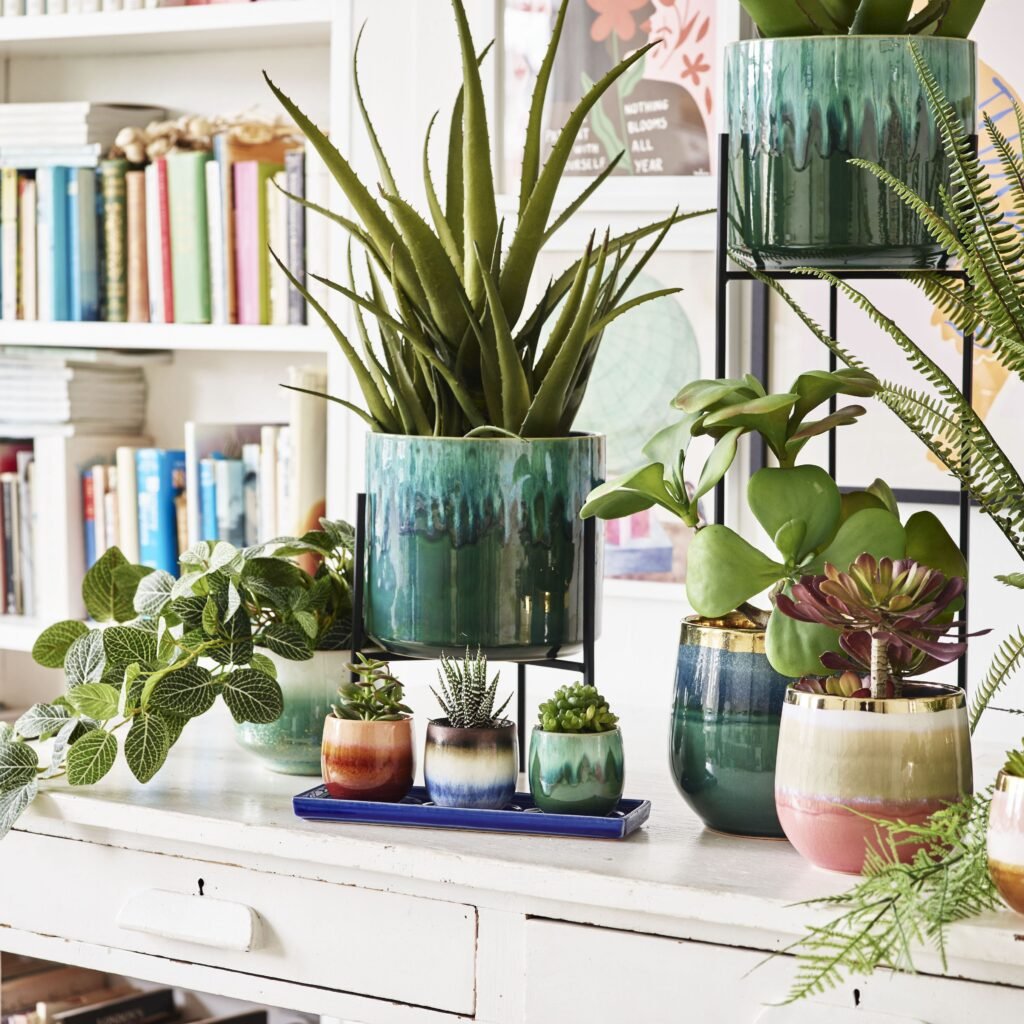
Before diving into the details, let’s understand why pot choice is so crucial. Pots are more than decorative containers—they influence the plant’s root health, water balance, and overall vitality. A mismatched pot can lead to common problems such as:
- Root rot from excess moisture
- Stunted growth from poor aeration
- Rapid drying and frequent watering needs
- Temperature stress on roots
Choosing between plastic and clay pots depends on your home environment, the type of plant you’re growing, and how much time you can dedicate to care.
2. Overview: Plastic vs. Clay Pots
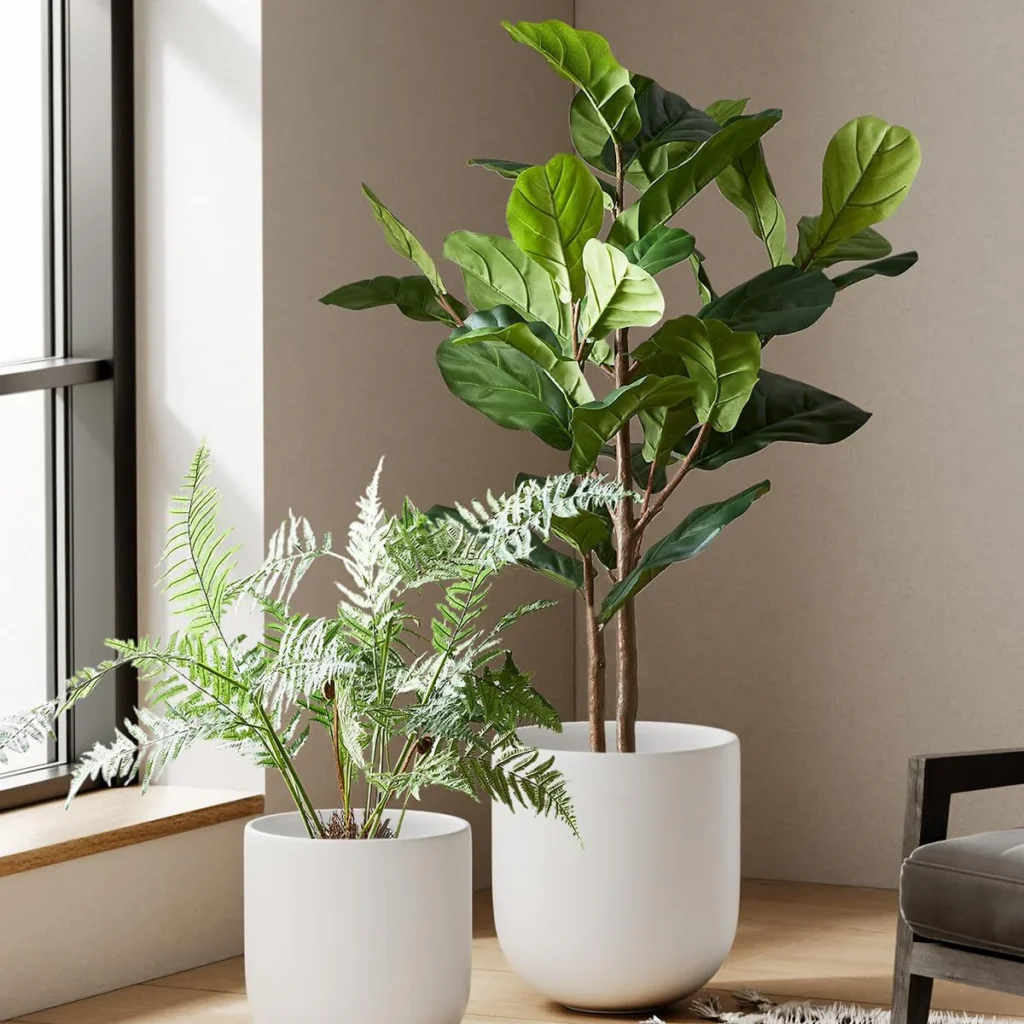
Let’s start with a quick overview of the two materials:
| Feature | Plastic Pots | Clay (Terracotta) Pots |
|---|---|---|
| Material | Lightweight, non-porous synthetic | Natural, porous baked clay |
| Moisture retention | Retains water longer | Dries out quickly |
| Weight | Very light | Heavier and more stable |
| Temperature | Less breathable, may trap heat | Naturally cooling and breathable |
| Durability | Resistant to breakage | Can crack or chip easily |
| Cost | Usually inexpensive | Slightly pricier per pot |
| Style | Available in various colors and shapes | Classic earthy look |
| Best for | Moisture-loving or fast-growing plants | Succulents, cacti, and plants that prefer drier soil |
Both options can grow healthy plants when chosen wisely, but your environmental conditions and plant needs should guide your decision.
3. The Case for Clay Pots: Natural, Breathable, and Beautiful
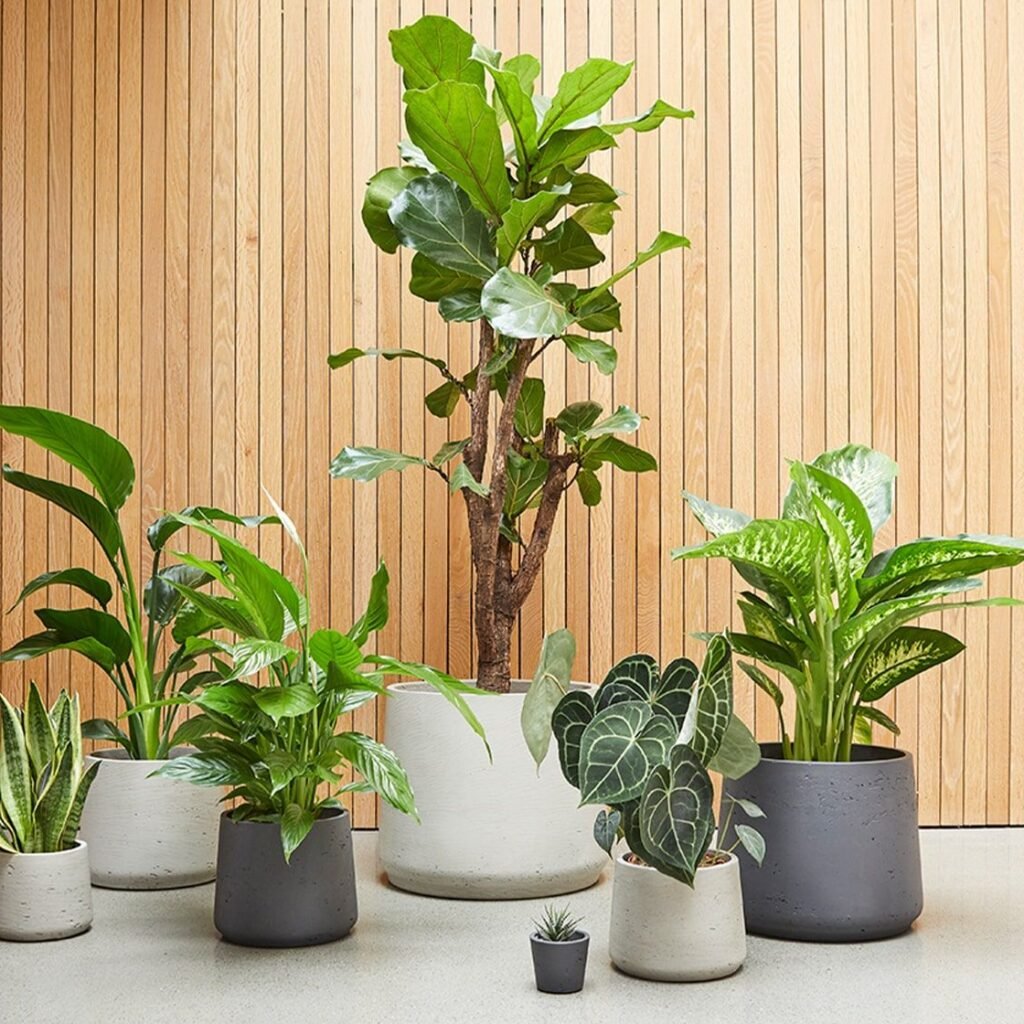
Clay pots, especially the traditional terracotta type, are made from natural clay and fired in kilns. Their porous walls allow air and moisture to move through, making them ideal for plant roots that need good aeration.
Advantages of Clay Pots
- Excellent Breathability:
Clay pots allow air circulation through their walls, which helps roots “breathe” and prevents soil from staying soggy. This reduces the risk of root rot and fungal growth, especially in plants sensitive to overwatering. - Natural Cooling:
Terracotta naturally regulates temperature. In hot conditions, the pot cools down as moisture evaporates, protecting roots from overheating. - Classic Aesthetic:
Clay pots offer a timeless, rustic charm that blends beautifully with all interior styles—from bohemian to minimalist. The warm, earthy tones of terracotta also complement green foliage perfectly. - Weight and Stability:
The heaviness of clay pots makes them perfect for tall or top-heavy plants. They are less likely to tip over compared to lightweight plastic pots. - Eco-Friendly:
Clay is a natural and biodegradable material, making it an environmentally friendly choice for sustainable gardeners.
Disadvantages of Clay Pots
- Dries Out Quickly:
The porous nature that benefits roots can also cause soil to dry faster. This means more frequent watering, which may not be ideal for busy plant owners. - Fragile:
Clay pots can easily crack or chip if dropped or exposed to freezing temperatures. - Weight:
While stability is a plus, the extra weight can make large pots difficult to move or rearrange. - Salt Build-Up:
Over time, minerals and salts from water can form white deposits on the surface of clay pots. Though harmless, this can affect aesthetics.
Best for:
Clay pots are ideal for succulents, cacti, herbs, or Mediterranean plants that prefer drier soil and good airflow.
4. The Case for Plastic Pots: Lightweight, Versatile, and Water-Efficient
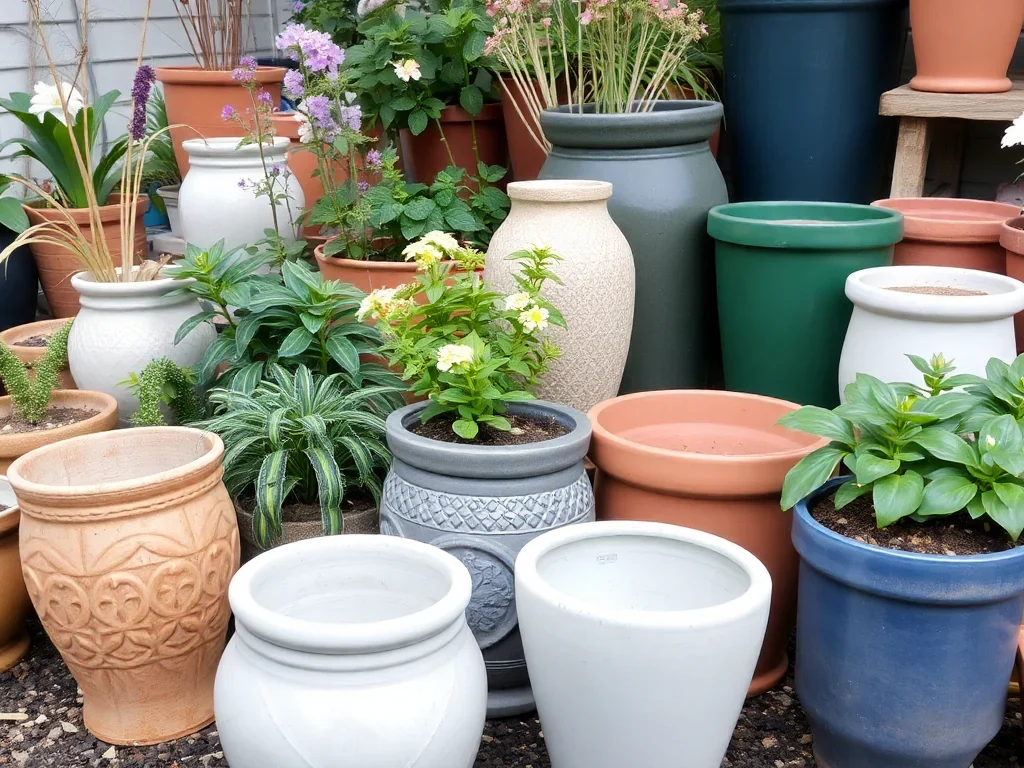
Plastic pots are made from synthetic polymers and are the most widely available type of plant container. Their main advantage lies in their ability to retain moisture and provide flexibility in design.
Advantages of Plastic Pots
- Excellent Water Retention:
Plastic pots are non-porous, meaning they don’t allow air or moisture to escape through the sides. This helps retain water longer—great for tropical plants and busy gardeners who can’t water frequently. - Lightweight:
Perfect for shelves, hanging planters, and large indoor plants that may need occasional repositioning. - Durability:
Unlike clay, plastic doesn’t break easily. It withstands drops, temperature fluctuations, and everyday handling with ease. - Variety in Design:
Available in endless colors, shapes, and textures, plastic pots can match any home decor style—modern, colorful, minimalist, or playful. - Cost-Effective:
Plastic pots are generally inexpensive and easy to find in every size.
Disadvantages of Plastic Pots
- Poor Air Circulation:
Because plastic pots don’t “breathe,” they can trap moisture, leading to waterlogged soil if drainage holes are inadequate. - Heat Retention:
In sunny spots, plastic pots can trap heat, potentially damaging sensitive roots. - Environmental Impact:
Unless made from recycled materials, plastic pots contribute to environmental pollution and take centuries to decompose. - Aesthetic Limitations:
Though designs have improved, plastic pots may not have the same organic charm as terracotta or ceramic.
Best for:
Plastic pots suit moisture-loving plants like ferns, calatheas, peace lilies, or philodendrons. They’re also great for beginners or anyone with a busy lifestyle.
5. Considering Plant Type and Care Habits
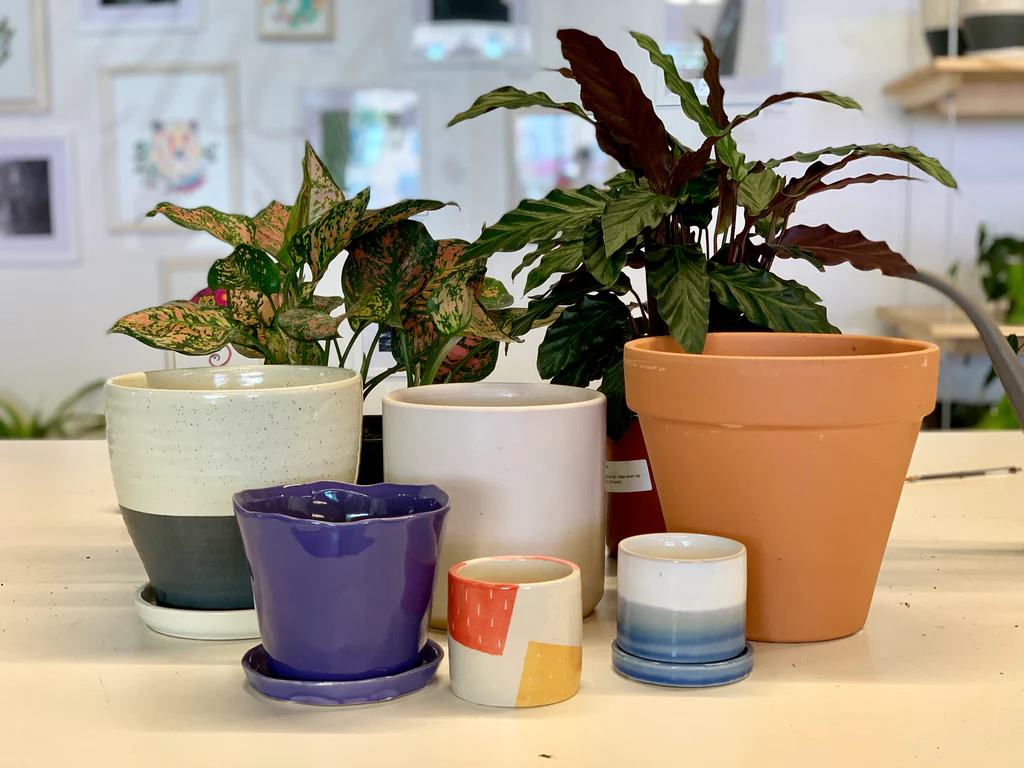
The key to choosing between plastic and clay lies in understanding your plant’s natural needs and your watering habits.
| Plant Type | Best Pot Choice | Reason |
|---|---|---|
| Succulents and Cacti | Clay | Allows quick drying, prevents root rot |
| Ferns, Calatheas, and Tropical Plants | Plastic | Retains moisture for humidity-loving species |
| Herbs | Clay | Prefers drier roots and breathable pots |
| Orchids | Plastic (with good drainage) | Retains moisture but needs aeration |
| Pothos, Philodendrons | Plastic | Flexible, low-maintenance, and water-retaining |
| Aloe Vera | Clay | Reduces risk of overwatering |
If you tend to overwater, clay pots can help regulate moisture naturally. If you forget to water often, plastic pots will reduce plant stress by keeping the soil moist longer.
6. Aesthetic and Design Considerations
Your choice of pot can also reflect your personal style. Here’s how each material fits into different decor themes:
- Modern and Minimalist Interiors: Smooth plastic or matte white clay pots create a clean, elegant look.
- Bohemian or Rustic Spaces: Terracotta and clay pots add warmth and authenticity.
- Colorful and Playful Homes: Bright plastic pots bring vibrancy and fun.
- Industrial or Urban Decor: Black, concrete-style plastic pots mimic a sleek, contemporary finish.
Don’t forget to mix and match! Many plant enthusiasts use plastic nursery pots inside decorative clay or ceramic covers, achieving the best of both worlds—function and beauty.
7. Environmental and Practical Factors
Sustainability:
If you’re eco-conscious, clay pots are the greener choice since they are made from natural materials and are biodegradable. However, recycled or upcycled plastic pots can also be a responsible option if disposed of properly.
Maintenance and Cleaning:
Clay pots require occasional scrubbing to remove salt buildup. Plastic pots, on the other hand, are easy to clean with soap and water.
Temperature Sensitivity:
Clay keeps roots cool, making it great for warm climates. Plastic, being less insulating, can warm up quickly—better for colder indoor spaces.
8. The Perfect Balance: Combining Plastic and Clay Pots
Many experienced plant lovers prefer using both materials strategically. For example:
- Keep plants that need constant moisture in plastic pots.
- Grow drought-tolerant species in clay pots.
- Use decorative clay outer pots to hide plastic grow pots—maintaining aesthetics and flexibility.
This hybrid approach ensures you meet the unique water, light, and temperature needs of all your plants without compromising style.
Conclusion
Choosing between plastic and clay pots for your houseplants is not a one-size-fits-all decision. It’s about understanding your plants’ personalities and your own lifestyle. Clay pots are perfect for those who appreciate natural beauty, breathability, and traditional aesthetics, while plastic pots offer convenience, affordability, and design variety.
If you’re a beginner, start with plastic pots to minimize watering worries. As you gain experience and confidence, experiment with clay pots for a more natural, earthy gardening experience.
Ultimately, the “right” pot is the one that supports your plant’s health and complements your home’s style. By choosing thoughtfully, you’ll not only grow thriving houseplants but also create a harmonious living space filled with life, color, and balance.
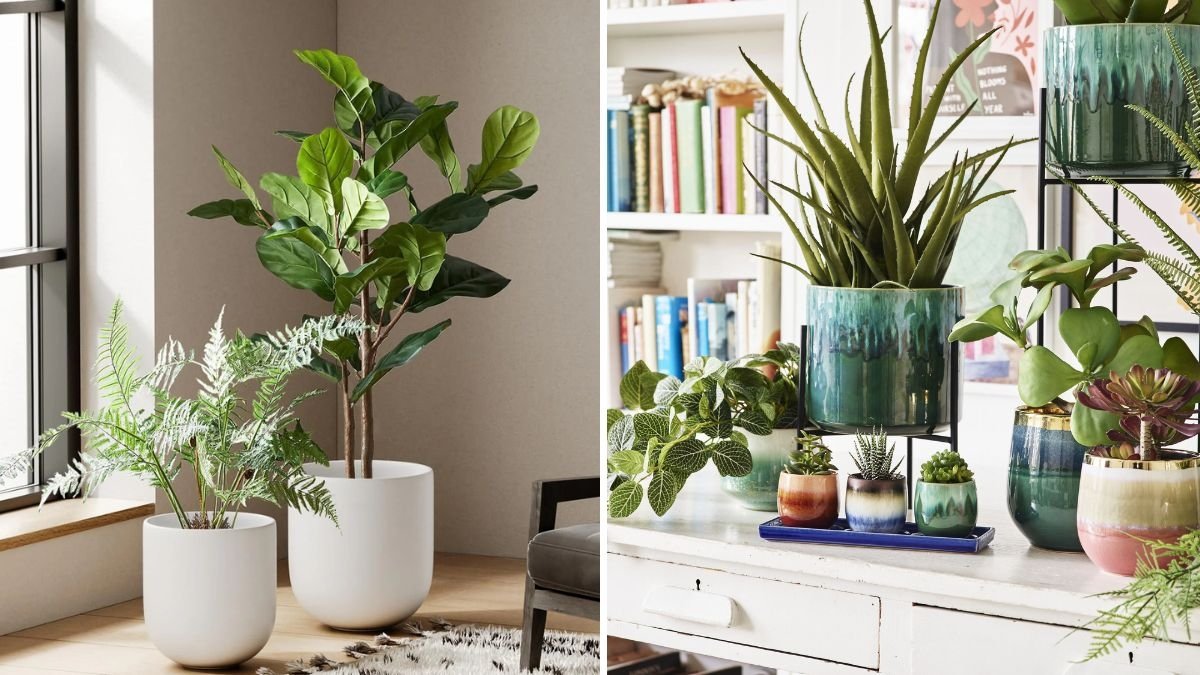




Leave A Comment